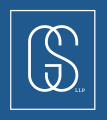Lessons From the Elizabeth Holmes Trial

With start-up businesses or any endeavor in its beginning phases, the phrase “fake it till you make it” is often used as a phrase of encouragement. This phrase is taking on a new meaning as the trial begins of Elizabeth Holmes, a person at the center of Silicon Valley’s biggest scandal in recent history.
Holmes, once the world’s youngest, self-made, female billionaire and former CEO of Theranos, faces charges for ten counts of wire fraud and two counts of conspiracy to commit wire fraud, up to twenty years in prison, and payment of potential fines and restitution. The charges are based on her and her former business partner, Ramesh “Sunny” Balwani, alleged fraud against investors and patients in their blood-testing company, Theranos.
The premise of all the allegations and charges against Holmes is that the purported revolutionary blood sampling and testing technology at the heart of Theranos’ lofty valuation did not work and never worked. Once touted as a great disruptor to the medical testing industry, Theranos promised that it could obtain the same quality and quantity of information from a single pin prick on a single finger as from conventional blood sampling and testing methods. While some scientists and physicians doubted the claim and sought the algorithm and supporting information from Theranos, many investors, hoping to be part of the next tech unicorn, bought Holmes’s pitch.
The prosecution alleges that Holmes knew the technology did not work, yet continued to lure investors with false information about it. It is alleged that she falsified documents to encourage further investments and caused harm to patients by allowing Theranos’s unproven technology to be used to diagnose and, at times misdiagnose, illnesses.
Holmes’s defense strategy is unconventional for a white-collar criminal trial. Her two main defenses are expected to be that 1) she just had too much faith in her company which led her to make false statements, but she was not intentionally making false statements and 2) she was manipulated by Balwani, her boyfriend at the time of the alleged fraud.
As to the first defense, while Intent to defraud is notoriously difficult to prove with direct evidence, significant circumstantial evidence exists that Holmes knew Theranos’s technology and methodology did not work, particularly during the late rounds of equity pitches and investments. Holmes’s second defense, that her business partner and boyfriend manipulated her to such an extent that she was unable to form the intent to defraud Theranos’ investors and patients, is unique and in many ways, unprecedented in a case of this type. It is unclear what evidence Holmes will introduce to support this defense or whether a jury will find that a Stanford graduate with an immensely powerful Board of Directors was capable of being manipulated to the extent claimed.
The rise and fall of Theranos and Holmes holds lessons for the design and construction industry, fields usually not associated with Silicon Valley and unicorn valuations. Over the past 20 years, the construction industry has seen an avalanche of new materials and proprietary products that contain express or implicit performance guarantees. Unfortunately, not all those products perform as represented or contain adequate warnings about compatibility with other, conventional products. The results can be (and we have actually seen in litigation) repair costs in the millions of dollars that may not be recoverable from the manufacturer and may not be fully insurable losses. To fill that financial void, claims are made against the design professionals for failing to properly investigate the products before specifying them, the product manufacturers (assuming they are solvent, insured and/or can be sued in the US), and the construction team for breach of warranty and improper installation. The Holmes trial serves as a reminder that before specifying or using new or untested products, a degree of diligence is required to mitigate and hopefully altogether avoid the failure and large financial losses.
The attorneys in our Dallas and Austin offices are available to answer any questions you may have about risk management in the design and construction industry. Please contact us at info@gstexlaw.com with any questions you may have.
Legal Disclaimers
This blog is made available by Gerstle Snelson, LLP for educational purposes and to provide general information about the law, only. Neither this document nor the information contained in it is intended to constitute legal advice on any specific matter or of a general nature. Use of the blog does not create an attorney-client relationship with Gerstle Snelson, LLP where one does not already exist with the firm. This blog should not be used a substitute for competent legal advice from a licensed attorney.
©Gerstle Snelson, LLP 2021. All rights reserved. Any unauthorized reprint or use of this material is prohibited. No part of this blog may be reproduced or transmitted in any form or by any means, electronic or mechanical, including photocopying, recording, or by any information storage or retrieval system without the express written permission of Gerstle Snelson, LLP.

